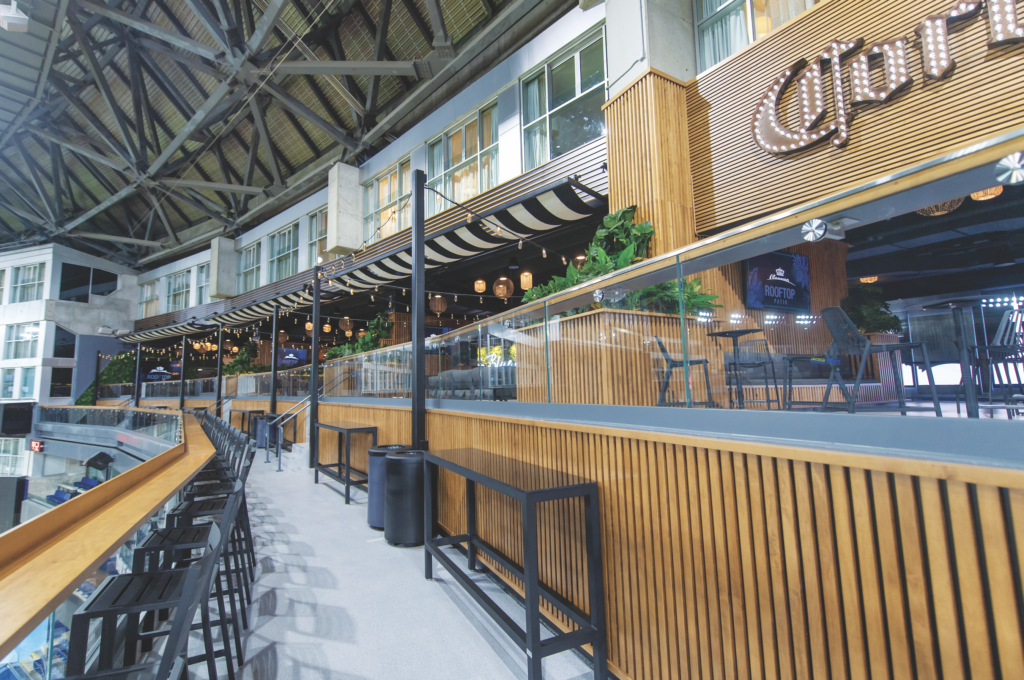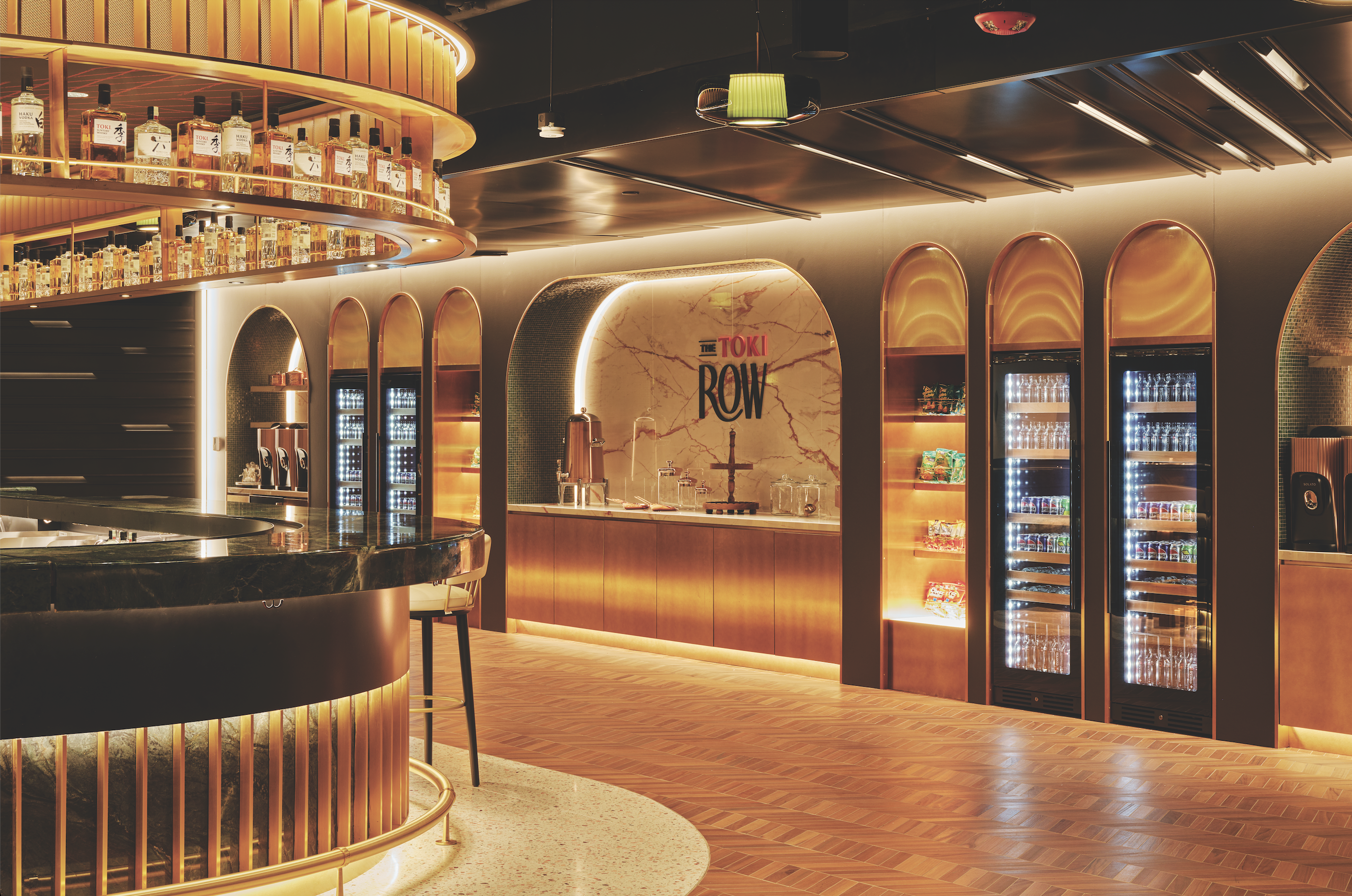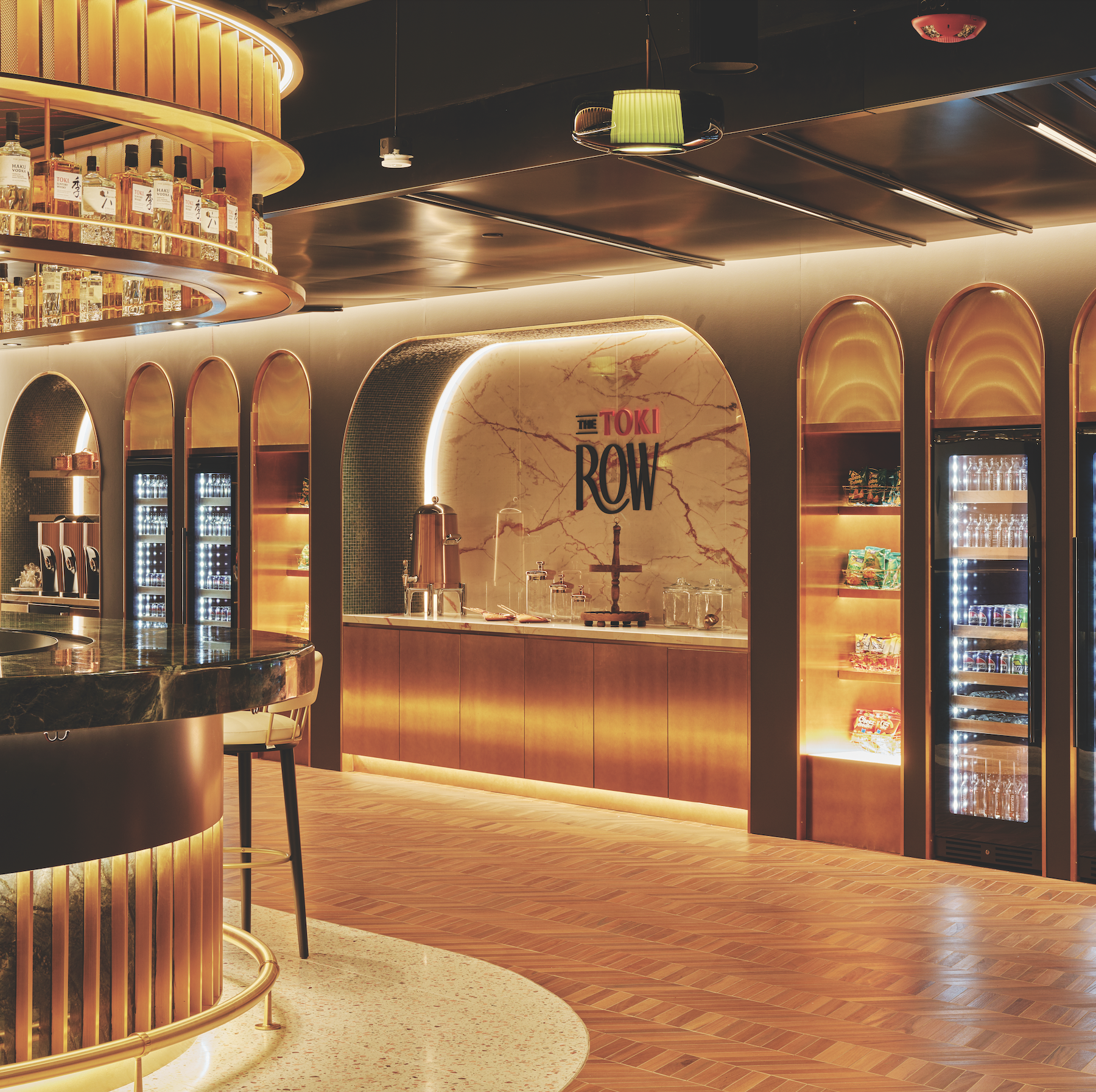When the SkyDome opened in downtown Toronto in 1989, it was the first sports stadium with a fully retractable roof—a technological marvel, making the space an immediate tourist attraction. Fans both locally and travelling into the city wanted to watch a live event at the SkyDome, whether it was a sold-out Rolling Stones concert or WrestleMania or the 1993 World Series when Joe Carter hit a series-clinching walk-off home run for the Toronto Blue Jays.
Needless to say, the appeal of seeing—and, with the advent of social media, being seen at—a sporting event has long existed. But several decades on, apart from the event itself, there are many different reasons to spend a few hours at the SkyDome, which was heartbreakingly renamed the Rogers Centre in 2005 (though the dome very much remains).
More recently, Rogers has embarked on a multi-year, CAD$400-million renovation of the stadium, with the goal of turning a day at the ballpark into a social experience. Naturally, seating and sightlines have been improved for fans. In addition, a new Outfield District was introduced, which features five new “neighbourhood” social spaces, including the Catch Bar and the Corona Rooftop Patio, which were built to allow people to spend the game hanging out. Food options at the park were also revamped for the 2024 season, and now reflect the diverse culinary experiences in Toronto. Along with ballpark staples like peanuts and Cracker Jacks, last year’s menus included stuffed Jamaican patties, poke bowls and loaded mac and cheese topped with jerk chicken or brisket. For those heading to the ballpark with kids, the new Park Social offers plenty of opportunity for play, including a giant Connect 4 board, and controllers and television screens so they can try the latest version of the MLB: The Show video game.
Everywhere you look, teams are working to turn the sporting event experience into something more than just watching the game. Some of the world’s most luxurious sports arenas include Los Angeles’ SoFi Stadium, London’s Wembley Stadium, Singapore’s National Stadium, Australia’s Perth Stadium and Brazil’s Arena BRB Mané Garrincha. They feature everything from field cabanas to VIP parking to personal catering to members-only clubs. Seating is plush, comfortable and central, with private bathrooms to boot.

An estimated US$10 billion is being spent on upgrading stadium experiences across North America alone over the next half decade. As millennials and Gen Z-ers become primary spenders at the stadium, teams are catering to their shorter attention spans, increased budgets and freer schedules. It’s no longer enough to sell the idea of a retractable roof or even the point of the day out: a live two-and-a-half-hour game. As it turns out, that’s because—according to research—millennials and Gen Z-ers are more casual fans than generations before them, and spend more time consuming sports highlights on social media than watching actual games. But what they do crave are communal experiences, especially in the post-pandemic world, and stadiums are attempting to cater to that.
A 2024 study found that nearly 40 per cent of millennials and Gen Z are willing to spend over US$500 and even upwards of US$5,000 on tickets to live events. Increasingly, stadiums are building private suite spaces to accommodate these desires. At Scotiabank Arena, where the Maple Leafs and Raptors play, there are 52 suite options, which feature private boxes, optional top-tier catering and access to former players and team mascots. There is also the Mastercard Lounge, which offers an all-inclusive dining experience that includes carved prime beef, fresh East and West Coast seafood and a perfect view of the game. This premium experience is fast becoming the norm across the NBA.
It’s no longer enough to sell the idea of a retractable roof or even the point of the day out : a live game
For example, at New York’s Barclays Center, the Brooklyn Nets offer a residence-inspired Toki Row club space that holds 150 people and includes a living room, dining room, lounge, all-inclusive food and a cocktail bar. At Madison Square Garden, the New York Knicks have a Lexus suite, which includes meals prepared in consultation with signature chefs and sommeliers, and a private VIP entrance. Others, too, offer up celebrity meet and greets, gift boxes, limited merchandise, personal butlers and concierge, private parking—the list goes on.
There is a cost to these experiences, of course. A suite at a Brooklyn Nets game can cost upwards of US$9,000, while the Lexus suite at the Knicks game costs up to US$23,000. It’s a no-brainer for the teams; premium seats account for between 60 and 70 per cent of their ticketing revenue. According to Forbes, in 2023, the Dallas Cowboys earned US$169 million in premium revenue, the Golden State Warriors earned US$262 million, and the New York Yankees hauled in US$171 million, and that’s just to name a few.
This is proving to be less of a trend and more of a revolution, with 14 luxury stadiums currently under construction around the world, including Saudi Arabia’s Prince Mohammed Bin Salman Stadium, which is set to host the 2034 World Cup; Liverpool’s Bramley-Moore Dock, which, when it opens later this year, will become the eighth largest in England and one of 10 host venues for UEFA Euro 2028; and China’s Hangzhou International Sports Centre, which will incorporate a stadium, indoor arena and aquatics centre, in addition to a new river-front park and public plazas.

As David Berri, an economics professor at Southern Utah University, recently stated in an interview with Marketplace, “The image that we used to have of stadiums that were really large and had cheap bleacher seats, that’s going away. The seats are increasingly premium seats, and they are priced to people who have lots of money.” This also speaks to how sports fans are now allocating their disposable income—and increasingly, that means live event experiences, both at home and further afield. According to a 2024 American Express global trend report, 37 per cent of sports fans plan to travel for a one-of-a-kind sporting event experience. This might include a trip across the border to hang out with die-hard Bills fans in Buffalo, to Boston to see the iconic Green Monster at Fenway Park, or to Chicago’s Wrigley Field to spend an afternoon sitting in the famous outfield bleachers. The goal, notes the report, is an “immersive adventure.”
Get the
Three from 3
newsletter
Join our global community of sharp, curious thinkers to receive a carefully curated email of the three most important things to read, see and do this week.
Listen and learn.
Tune into Third Culture Leaders, a podcast hosted by our co-founder and publisher, Muraly Srinarayanathas.
Explore how leaders skillfully navigate multiple cultural landscapes, leveraging their diverse backgrounds to drive innovation and change.
As a millennial, I get it. Two summers ago, I booked a trip to South Korea and attended a baseball game at Jamsil Baseball Stadium, which was originally built for the 1988 Summer Olympics in Seoul. The stadium wasn’t quite as luxurious as some other examples, but the sense of immersion was real. I feasted on local fare, including Korean fried chicken and gopchang, while watching the Korean Baseball Organization’s LG Twins and Lotte Giants battle it out, and was riveted not just by the game but by the coordinated chants from fans for each player stepping up to bat. The energy was high throughout the night, and the two-plus hours passed quickly.
Of course, the shift toward luxury experiences hasn’t been absolute. Teams remain mindful of losing fans who have been cheering for them and investing their money and time long before the luxury evolution kicked off. In fact, one of the most successful promotions the Blue Jays have had in the last few years is Loonie Dogs Night, where hot dogs in the stadium were priced at a dollar for every Tuesday home game. And recently, Phoenix Suns owner Mat Ishbia announced he was lowering the cost of in-arena concessions to just US$2, including hot dogs, popcorn and bottled water.
Ultimately, it seems, the new battle on the field is between the old-fashioned fans who just want to hit up the ballpark after a tough work week, have a hot dog and watch the game, and a new, young set who’d rather hang out in a premium suite, enjoy lobster and share their experience on social media, even if it means missing a few innings. More and more arenas are finding ways to appeal to both, through a combination of, say, loonie nights and upper-tier seating.
But for a new type of sports fan, it’s clear the purpose of going to a game is changing, becoming less about the simple bliss of watching your favourite player hit a walk-off home run surrounded by hundreds of your fellow fans, and more about access to exclusive experiences. For an increasing number of sports-minded folks, the game is just better with a side of fillet mignon and a glass of champagne.

